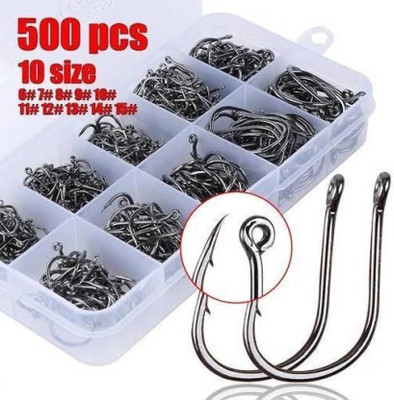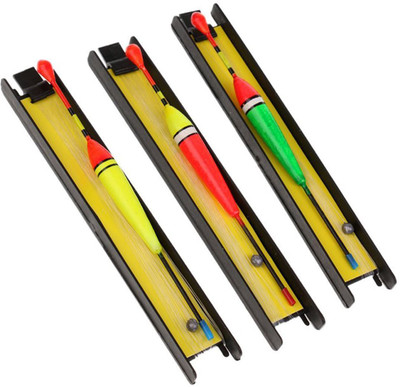
SPRED Set of Fishing rod and reel S-3 Blue Fishing Rod (210 cm, 0.21 kg, Blue)
Share
SPRED Set of Fishing rod and reel S-3 Blue Fishing Rod (210 cm, 0.21 kg, Blue)
3.7
47 Ratings & 3 ReviewsSpecial price
₹734
₹999
26% off
Available offers
T&C
T&C
T&C
T&C
Delivery
Check
Enter pincode
Delivery by2 May, Friday|Free
?
View Details
Highlights
- Blank Construction: 1 Piece
- Rod Type: Telescopic Rod
- Rod Action: Fast
- Rod Power: Medium
- Rod Blank Material: Fiber Glass
- Rod Handle Material: Fiber Glass
- Rod Length: 210 cm
Services
- Cash on Delivery available?
Seller
Description
**Fishing Rod:**
A fishing rod is typically made of lightweight yet sturdy materials such as graphite, fiberglass, or a combination of both. Its primary purpose is to cast your bait or lure into the water and provide the flexibility and strength needed to control and land fish of various sizes. Here are some key points to consider:
1. **Length**: Fishing rods come in a range of lengths, from ultra-short ice-fishing rods to long surf-casting rods. Longer rods often allow for longer casting distances, while shorter ones offer more precision and control in tight spaces.
2. **Action**: The action of a rod refers to its flexibility. Rods can be categorized as fast, medium, or slow action. Fast action rods bend mostly near the tip, making them ideal for long casts and quick hook sets. Slow action rods bend throughout their length, providing more cushion when fighting powerful fish.
3. **Power**: The power of a rod indicates its strength. Rods are classified as ultralight, light, medium-light, medium, medium-heavy, and heavy. Your choice depends on the target species and the type of fishing you plan to do.
4. **Grip**: The handle or grip of a fishing rod is typically made of cork, EVA foam, or rubber. It should feel comfortable in your hand and provide a secure grip during casting and retrieval.
**Fishing Reel:**
A fishing reel is the mechanical component that attaches to the fishing rod's butt section. It plays a crucial role in controlling the line's release and retrieval, making it an indispensable part of your fishing setup. Here are some key points to consider:
1. **Type**: Fishing reels come in various types, including spinning reels, baitcasting reels, and fly reels. The type you choose depends on your fishing style and the species you're targeting.
2. **Gear Ratio**: The gear ratio determines how quickly the line is retrieved. A higher gear ratio means faster retrieval, which can be beneficial for certain techniques like topwater fishing or when you need to quickly reel in a fish.
3. **Drag System**: The drag system controls the amount of resistance when a fish pulls the line. It's essential for preventing line breakage and tire out the fish gradually. High-quality reels have smooth, adjustable drag systems.
4. **Ball Bearings**: The number and quality of ball bearings in a reel affect its smoothness and longevity. More ball bearings typically result in a smoother reel performance.
In conclusion, a fishing rod and reel are inseparable partners that work together to make your fishing adventures successful. Whether you're casting for trout in a mountain stream or battling marlin in the open ocean, selecting the right rod and reel combination tailored to your needs is essential for a rewarding day on the water.
Read More
Specifications
General
| Brand |
|
| Model Number |
|
| Model Name |
|
Dimensions
| Weight |
|
| Handle Length |
|
Ratings & Reviews
3.7
★
47 Ratings &
3 Reviews
- 5★
- 4★
- 3★
- 2★
- 1★
- 23
- 7
- 5
- 5
- 7
3
Good
Nice but low quality not for catching big fish
READ MORENabam Dol
Certified Buyer, Papum Pare District
10 months ago
6
2
Report Abuse
4
Good quality product
As i Expected
READ MOREFlipkart Customer
Certified Buyer, Kolkata
11 months ago
7
5
Report Abuse
4
Wonderful
It's nice
READ MORERajashekar Gummalla
Certified Buyer, Khammam District
6 months ago
0
0
Report Abuse
Questions and Answers
Q:Is it right hand or lefthand
A:both
SARKARFISHING
Flipkart Seller1
3
Report Abuse
Q:How much weight it bring?
A:5 kg
SARKARFISHING
Flipkart Seller0
1
Report Abuse
Didn't get the right answer you were looking for
Safe and Secure Payments.Easy returns.100% Authentic products.
Back to top











